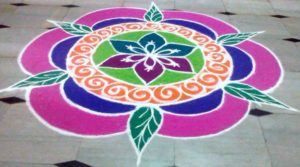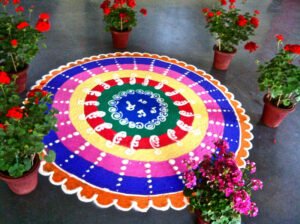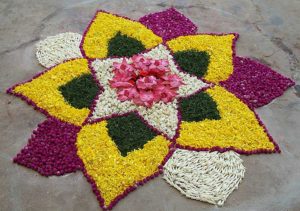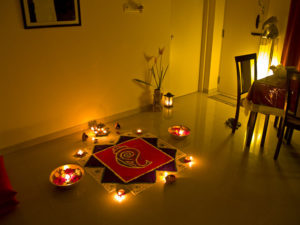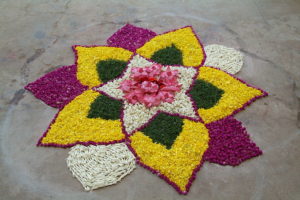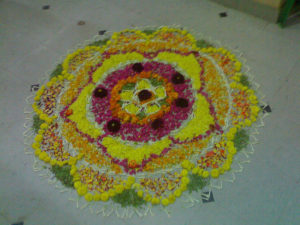We Make all types of Rangoli Like Flower petals Rangoli, and colors Rangoli etc all Rangoli
Rangoli is an art form from India in which patterns are created on the floor in living rooms or courtyards using materials such as colored rice, dry flour, colored sand or flower petals. It is usually made during Diwali (Deepawali), Onam, Pongal and other Indian festivals. Designs are passed from one generation to the next, keeping both the art form and the tradition alive.
Tags: rangoli artist in gurgaon, rangoli maker in gurgaon
The purpose of rangoli is decoration, and it is thought to bring good luck. Design depictions may also vary as they reflect traditions, folklore and practices that are unique to each area. It is traditionally done by women. Generally, this practice is showcased during occasions such as festivals, auspicious observances, marriage celebrations and other similar milestones and gatherings.
Rangoli designs can be simple geometric shapes, deity impressions, or flower and petal shapes (appropriate for the given celebrations), but they can also be very elaborate designs crafted by numerous people. The base material is usually dry or wet powdered rice or dry flour, to which sindoor (vermilion), haldi (turmeric) and other natural colours can be added. Chemical colors are a modern variation. Other materials include colored sand, red brick powder and even flowers and petals, as in the case of flower rangolis.
There are two primary ways to make a Rangoli, dry and wet, referring to the materials used to create the outline and (if desired) fill that outline with colour. Using a white material like chalk, sand, paint or flour, the artist marks a centre-point on the ground and cardinal points around it, usually in a square, hexagon or circle depending on region and personal preference. Ramifying that initially-simple pattern creates what is often and intricate and beautiful design. Motifs from nature (leaves, petals, feathers) and geometric patterns are common. Less common but by no means rare are representational forms (like a peacock, icon or landscape). “Readymade Rangoli” patterns, often as stencils or stickers, are becoming common, making it easier to create detailed or precise designs.

